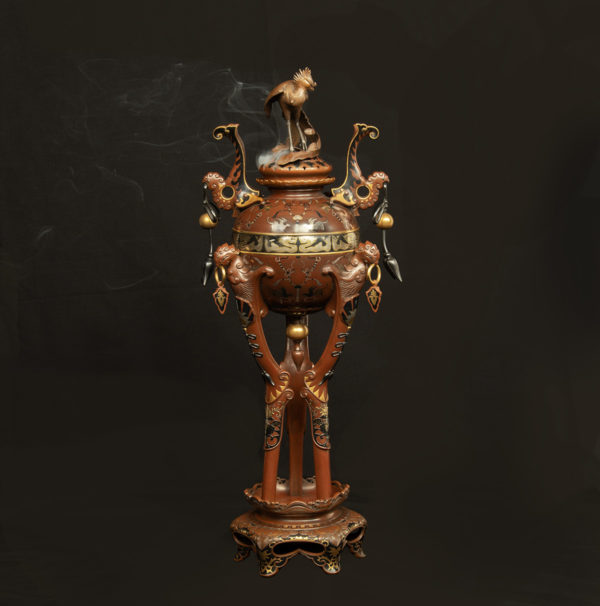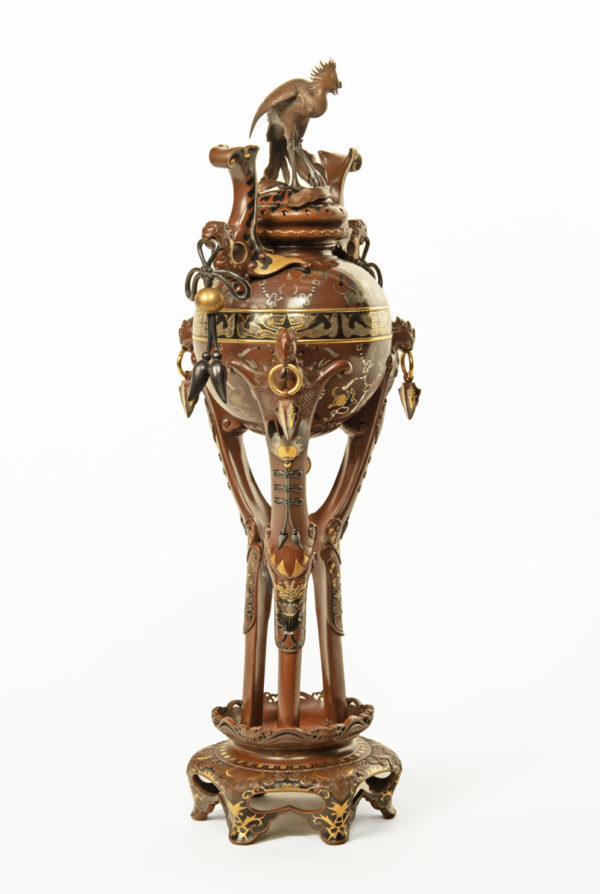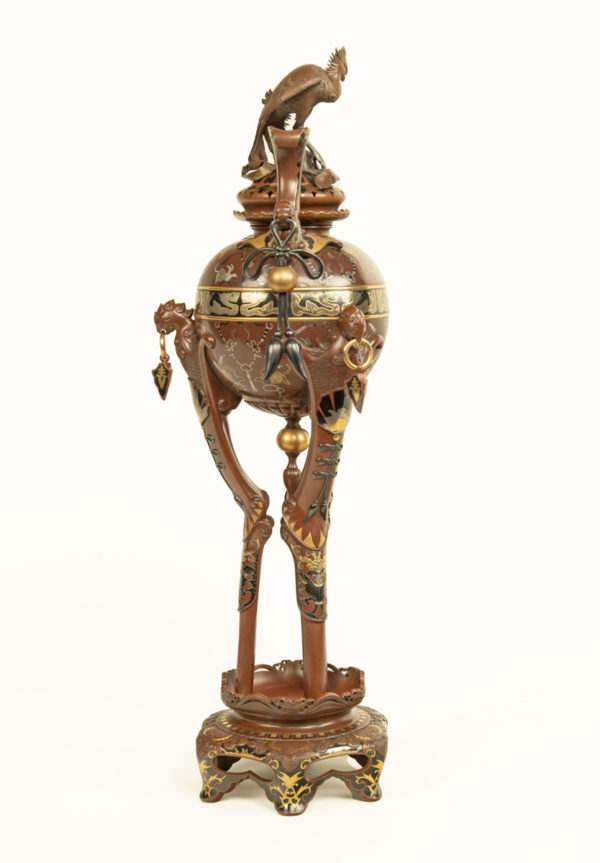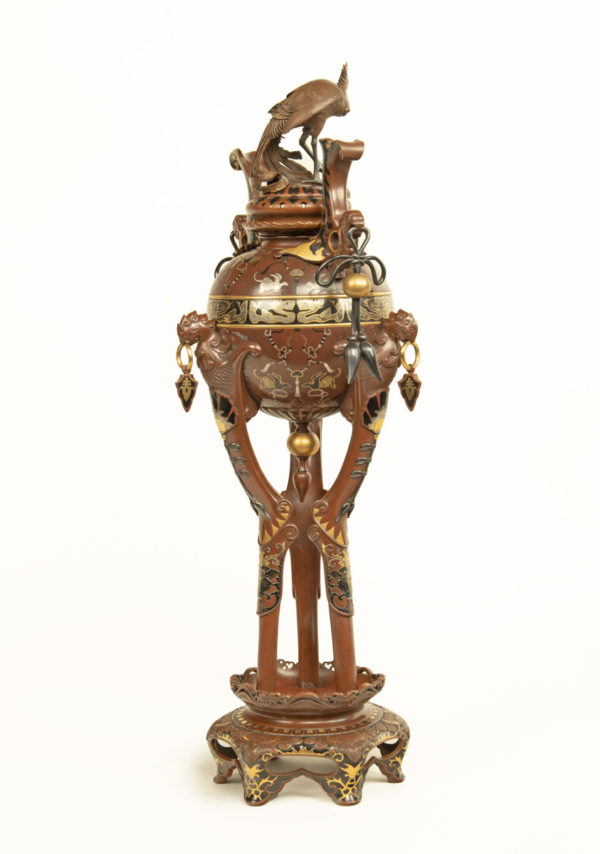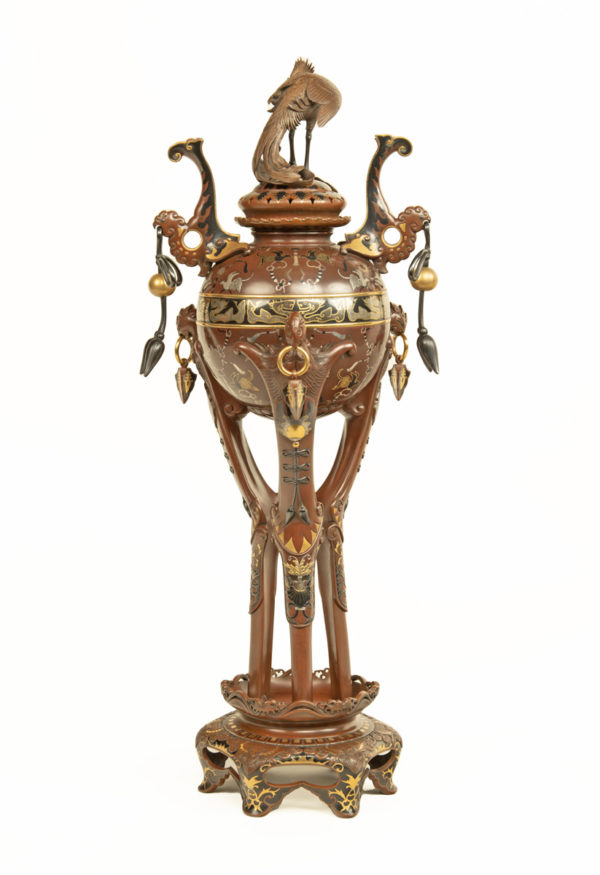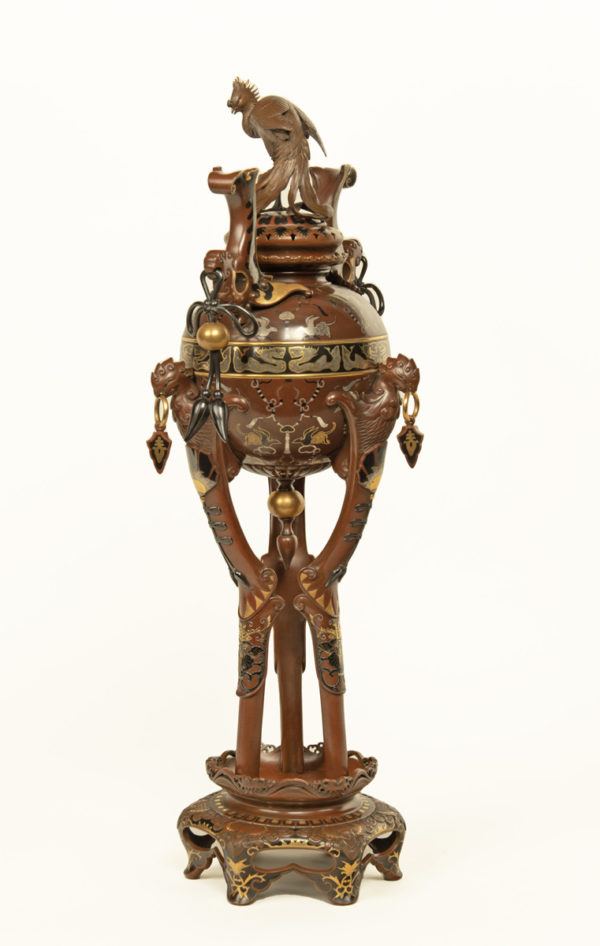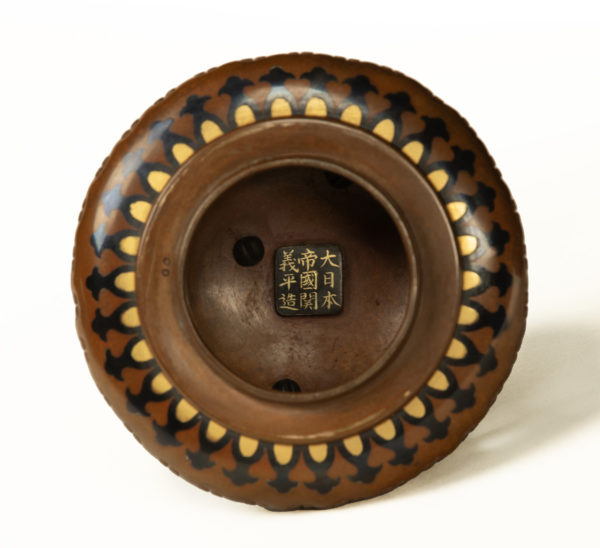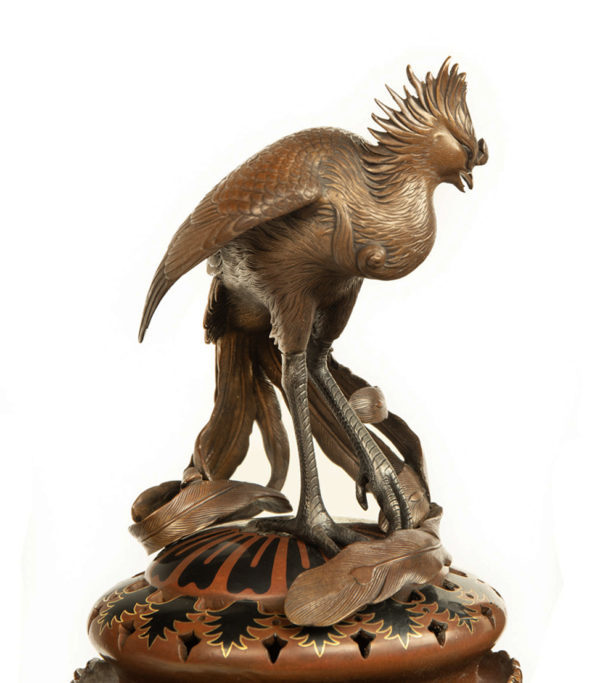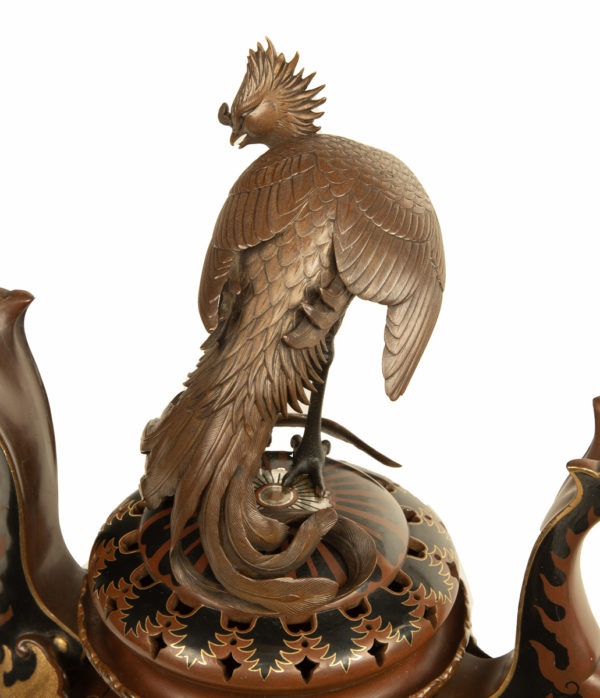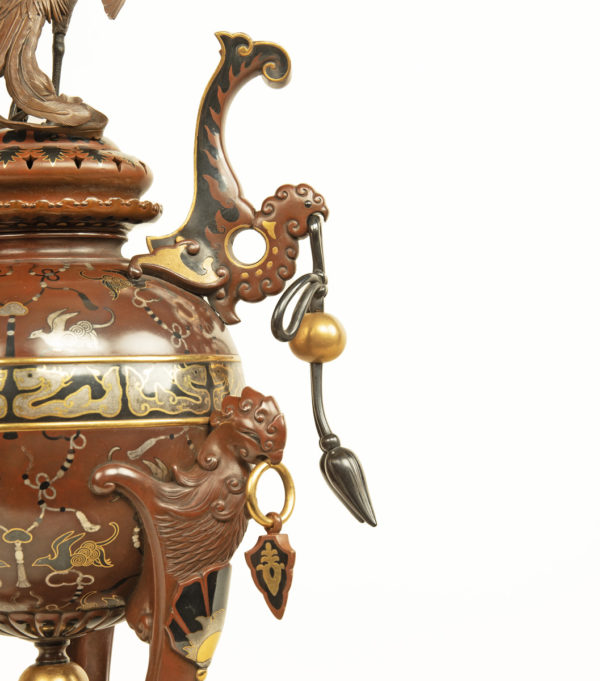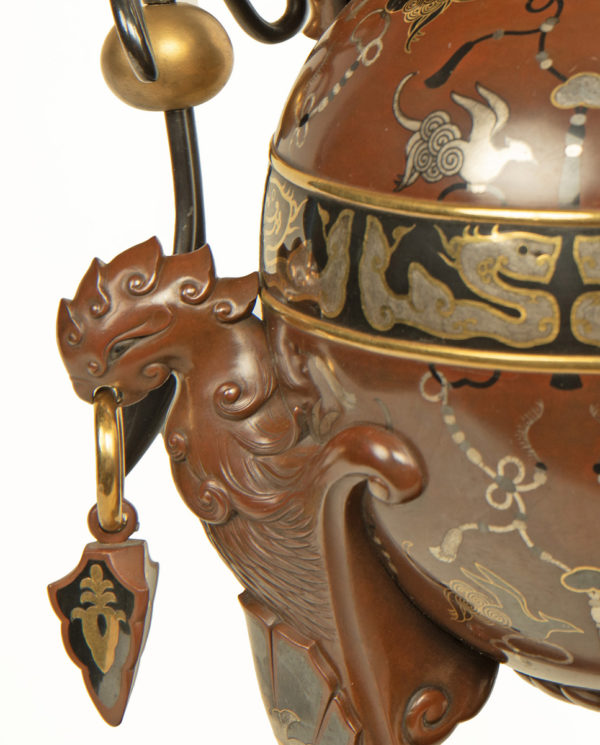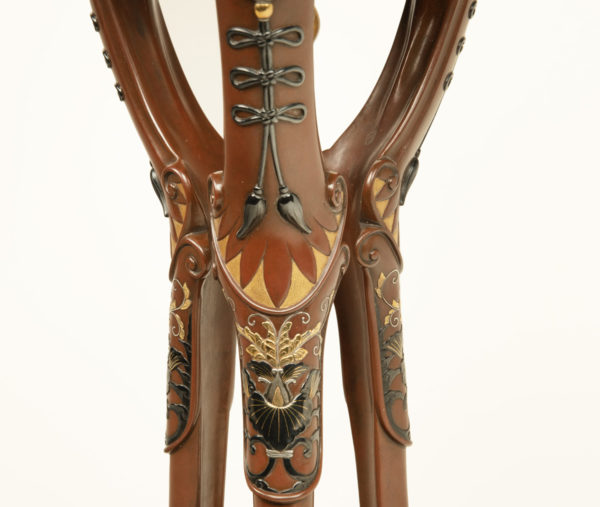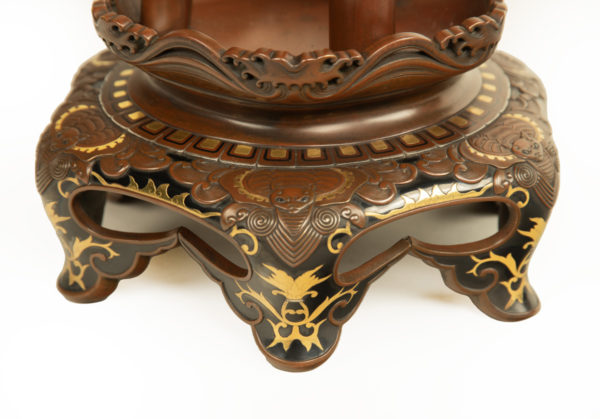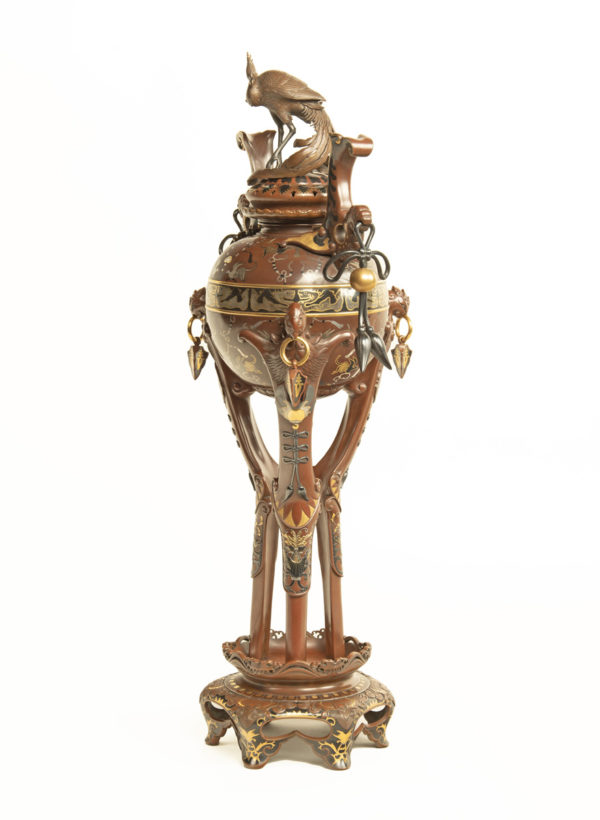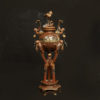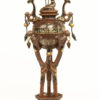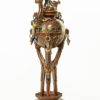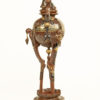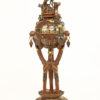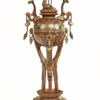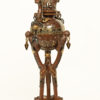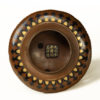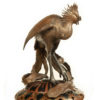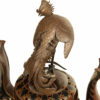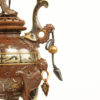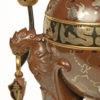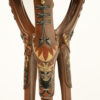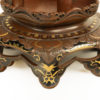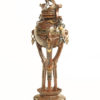As part of our Japanese works of art collection we are delighted to offer this complex outstanding quality Meiji Period (1868-1912) incense burner, manufactured by an artist recorded as working in Takaoka city between 1875-1900. The tall koro stands upon a bronze hexagonal base each leg carved as mythical beast in exquisite detail, the shaped feet further inlaid with decoration formed from sheets of shakudo and gold of a gauge rarely encountered, these were expensive materials even at that time. The top of the base gives rise to carved waves upon which three tall slender legs support the vessel above, these legs rise as phoenix carrying pendants, and are once again sumptuously onlaid with shakudo, gold and silver. The globular body is inlaid with pairs of birds amidst swags and garlands of gold, silver and shakudo interspersed with a central band of opposing serpents between gold borders, the globular koro houses a pair of winged phoenix handles each carrying tied shakudo garlands in their mouths. The lid of the koro is a work of art in its own right decorated with formal geometric bands of gold and shakudo inlays surmounted by a mixed metal phoenix of extraordinary quality. Finally, as the artists swansong the inside of the lid bears a lavish solid shakudo seal inlaid with a gold wire signature, this further use of such expensive materials is a clear demonstration of how highly regarded this particular item was, and possibly reflects how important its intended recipient was to be.
Literature :
When studying the extensive use of the materials coupled with the outstanding workmanship it is my firm belief that this koro was either destined for one of the major late 19th century expositions or commissioned for a wealthy or high ranking dignitary, the research continues, but rarely do I witness such meticulous attention to every minute detail, there is no doubting this “tour de force” of Meiji Period metalwork would have taken hundreds of hours to manufacture.
The Artist Seki Yoshihira is recorded on page 89 of the Toso Kinko Jiten (Japanese language), by Wakayama Takeshi, as “Surname Seki, resident of Takaoka City, Toyama Prefecture, Meiji Period”, he is also recorded In the Robert Haynes : the index of Japanese sword fittings and artists : Yoshihira, H 11568.0. family name: Seki worked in Takaoka City, Toyama prefecture, active 1875-1900.
Condition report :
Excellent condition throughout.
Approximate Sizes :
Height : 20 1/2″ 52 cm
Width : 8″ 20 cm
Depth : 6 1/4″ 16 cm
Free worldwide delivery and a certificate of authenticity are included within the price of this item. ep 80
